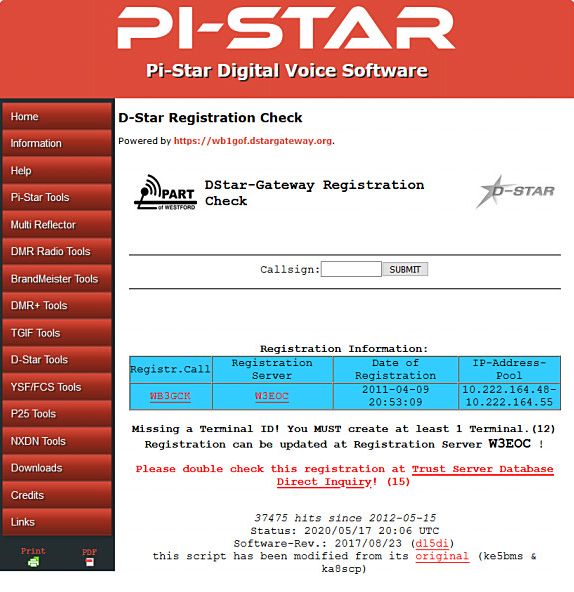I mentioned in a previous post that I was going to venture into the digital voice modes. Well, I did. I was successful in getting a hotspot up and running, although I did hit a snag along the way.
Yeah, I know; as usual, I’m late to the party on this stuff. Up until now, I’ve had only limited experience with D-Star. Years ago, I used a borrowed Icom ID-1 for 1.2GHz data during a couple of ARES-RACES exercises. I hadn’t used D-Star again until I bought a Kenwood TH-D74A six months ago. Even then, I had only used D-Star to check into a local ARES-RACES net over a nearby D-Star repeater.
My local ARES-RACES group here in Chester County, PA, held one of our monthly Tech Rallies using Zoom. Jim WA3NOA gave an interesting talk on digital voice hotspots. Inspired by Jim’s talk, I went ahead and ordered an MMDVM hotspot from Amazon.
While waiting for the hotspot to arrive, I started studying up. I found lots of great articles and videos out there. W6GPS’s videos on the TH-D74 and D-Star were particularly helpful. Following one of his videos, I picked a hotspot frequency and programmed it into my radio.
The hotspot arrived a few days later. I was immediately struck how tiny this thing is. The instructions that came with it were sparse but clear enough to get started. I was able to successfully connect my laptop to the hotspot’s internal WiFi hotspot and access the Pi-Star configuration screens.

Long story short… Before too long, I had the hotspot connected to my home WiFi network and had the D-Star section configured. I keyed up my radio and received the expected D-Star response from the hotspot. Then, I tried to connect to some reflectors. No matter which one I tried, I got a “reflector is busy” message on my radio. Hmmm…
I sent screenshots of my hotspot configuration screens to Jim, but he didn’t see anything out of wack. I next focused on my WiFi router. I tried connecting the hotspot to other WiFi networks. No joy.
Finally, I went out and checked the status of my D-Star registration. That showed that my registration from way-back-when was missing a Terminal ID. An email exchange with WA3NOA confirmed that was likely my issue. My D-Star registration password no longer worked, so I reached out to Jim W3BIF, the admin for the W3EOC D-Star repeater.

The next morning I had an email from W3BIF saying he had straightened out my incomplete D-Star registration. Within minutes, I was connected to a reflector and having a QSO with a ham in Georgia. He reported that my audio sounded great.
I used to be one of those guys who thought this stuff isn’t real ham radio. I guess I’ve come around a bit. I won’t be giving up CW any time soon, but I will admit it has been fun playing around with this new (to me)mode over the past week.
Over time, I might branch out to try some other digital voice modes. In the meantime, you can often find me monitoring D-Star reflector, REF20A or REF30C.
73, Craig WB3GCK
